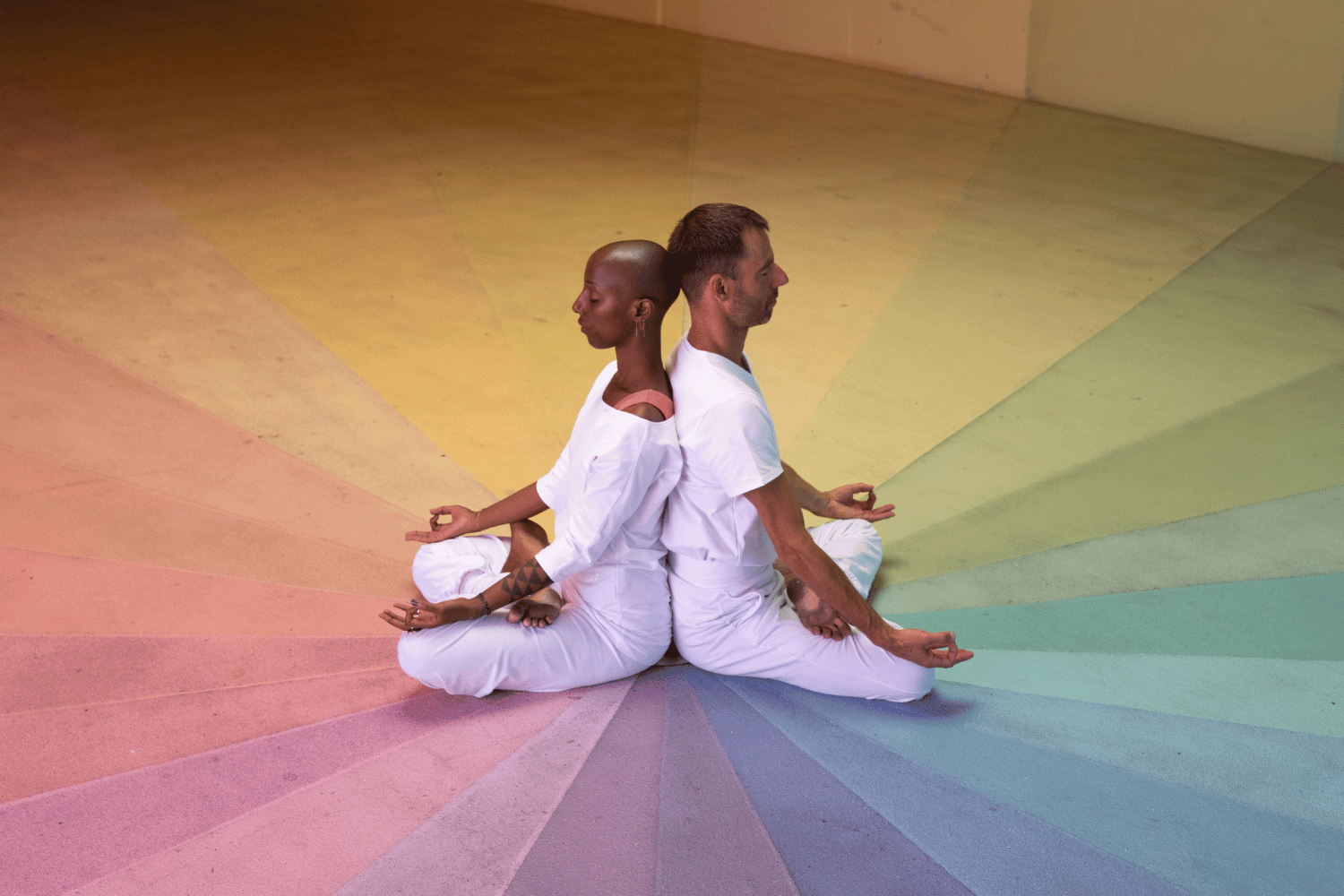Colors are an important part of human experience and can have a significant impact on our emotions, behavior, and perception of the world around us.
Here are a few reasons why colors may be important to human beings:
Communication - Colors can be used to communicate information and emotions. For example, red may be used to indicate danger or warning, while green may be used to indicate safety or go. Different cultures may also associate different colors with specific meanings, such as white being associated with purity in many Western cultures.
Emotion - Colors can also have an impact on our emotions. Different colors can evoke different emotions, such as red being associated with passion and anger, or blue being associated with tranquility and calm.
Perception - Colors can also affect our perception of objects and surroundings. For example, warmer colors such as red and yellow may make an object appear larger or closer, while cooler colors such as blue and green may make an object appear smaller or farther away.
Aesthetics - Colors can also be important for aesthetics and personal preference. Different people may have different preferences for certain colors, and colors can be used to create visual appeal in various settings, such as in art, design, and fashion.
Overall, colors are an important aspect of human experience and can have a significant impact on how we perceive and interact with the world around us.
There are many different beliefs and associations surrounding the spiritual meanings of different colors. Here are some common associations with different colors:
-
Red, Bordeaux - Red is often associated with passion, energy, and strength. It is also sometimes associated with danger or warning. Red is thought to be a stimulating color that can increase heart rate and breathing. It is also often associated with love and desire. Red is often associated with the goddesses Durga and Lakshmi, and is also sometimes associated with the god Hanuman. Red is thought to be a powerful and auspicious color that represents energy, strength, and passion.
See our red yoga wear collection
-
Orange, Sienna - Orange is often associated with creativity, determination, and enthusiasm. It is also sometimes associated with warmth and happiness. Orange is thought to be a cheerful and uplifting color that can promote feelings of joy and positivity. It is also sometimes associated with physical comfort and security. Orange is often associated with the god Krishna, and is also sometimes associated with the goddesses Lakshmi and Durga. Orange is thought to be a warm and vibrant color that represents creativity, enthusiasm, and determination.
see our orange yoga outfit collection
-
Yellow, saffron - Yellow is often associated with intelligence, clarity, and happiness. It is also sometimes associated with caution or cowardice. Yellow is thought to be a cheerful and uplifting color that can promote feelings of happiness and clarity. It is also sometimes associated with caution or hesitation. Yellow is often associated with the god Vishnu, and is also sometimes associated with the goddesses Lakshmi and Durga. Yellow is thought to be a bright and cheerful color that represents intelligence, clarity, and happiness.
see our saffron yoga outfit collection
-
Green - Green is often associated with nature, growth, and renewal. It is also sometimes associated with abundance and prosperity. Green is thought to be a soothing and calming color that can promote feelings of balance and harmony. It is also sometimes associated with abundance and prosperity. Green is often associated with the god Krishna, and is also sometimes associated with the goddesses Lakshmi and Durga. Green is thought to be a calming and soothing color that represents nature, growth, and renewal.
see our green yoga outfit collection
-
Blue - Blue is often associated with tranquility, trust, and stability. It is also sometimes associated with loyalty and wisdom. Blue is thought to be a calming and soothing color that can promote feelings of peace and serenity. It is also sometimes associated with reliability and trustworthiness. Blue is often associated with the god Krishna, and is also sometimes associated with the goddesses Lakshmi and Durga. Blue is thought to be a calming and soothing color that represents tranquility, trust, and stability.
see our blue yoga outfit collection
-
Purple - Purple is often associated with spirituality, mystery, and creativity. It is also sometimes associated with wealth and royalty. Purple is thought to be a luxurious and sophisticated color that can promote feelings of creativity and spirituality. It is also sometimes associated with wealth and power. Purple is often associated with the god Krishna, and is also sometimes associated with the goddesses Lakshmi and Durga. Purple is thought to be a luxurious and sophisticated color that represents spirituality, mystery, and creativity.
see our purple yoga outfit collection
-
Pink - Pink is often associated with love, innocence, and kindness. It is also sometimes associated with femininity. Pink is thought to be a gentle and calming color that can promote feelings of love and kindness. It is also sometimes associated with innocence and femininity. Pink is often associated with the goddesses Lakshmi and Durga, and is also sometimes associated with the god Krishna. Pink is thought to be a gentle and calming color that represents love, innocence, and kindness.
-
White - White is often associated with purity, innocence, and clarity. It is also sometimes associated with spirituality and enlightenment. White is thought to be a clean and pure color that can promote feelings of clarity and innocence. It is also sometimes associated with spirituality and enlightenment. White is often associated with the god Krishna, and is also sometimes associated with the goddesses Lakshmi and Durga. White is thought to be a clean and pure color that represents purity, innocence, and clarity.
-
Black - Black is often associated with power, sophistication, and mystery. It is also sometimes associated with negativity or death. Black is thought to be a powerful and sophisticated color that can promote feelings of mystery and sophistication. It is also sometimes associated with negativity or death.Black is often associated with the god Shiva, and is also sometimes associated with the goddesses Kali and Durga. Black is thought to be a powerful and sophisticated color that represents power, mystery, and sophistication.
In Hindu and Buddhist traditions, the chakras are energy centers located in the body and each chakra is associated with a specific color, and the color is thought to be related to the function and qualities of the chakra. Here is a brief overview of the chakras and their associated colors:
-
Muladhara (Root) Chakra - Red - The Muladhara chakra is associated with the color red and is located at the base of the spine. It is related to grounding, stability, and survival.
-
Swadhisthana (Sacral) Chakra - Orange - The Swadhisthana chakra is associated with the color orange and is located in the lower abdomen. It is related to emotion, creativity, and sexuality.
-
Manipura (Solar Plexus) Chakra - Yellow - The Manipura chakra is associated with the color yellow and is located in the upper abdomen. It is related to personal power, self-esteem, and confidence.
-
Anahata (Heart) Chakra - Green - The Anahata chakra is associated with the color green and is located in the center of the chest. It is related to love, compassion, and connection.
-
Vishuddha (Throat) Chakra - Blue - The Vishuddha chakra is associated with the color blue and is located in the throat. It is related to communication, self-expression, and truth.
-
Ajna (Third Eye) Chakra - Indigo - The Ajna chakra is associated with the color indigo and is located between the eyebrows. It is related to intuition, insight, and perception.
-
Sahasrara (Crown) Chakra - Violet - The Sahasrara chakra is associated with the color violet and is located at the top of the head. It is related to enlightenment, spiritual connection, and transcendence.

















